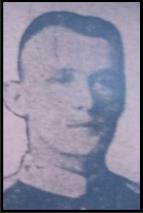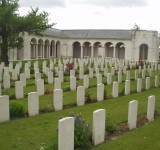Personal Details
John was born in Newtown Street, Whitchurch in 1887, the eldest son of John Matthew a joiner, and Elizabeth Field of 31 Newtown Street, Whitchurch Shropshire.
John had seven sisters, Adelaide, Sara, Jane, Ellen, Eve, Hilda and Jessie, and one brother, Frank.
The 1901 Census shows John living with his parents, and working as a telegraph messenger.
Military Details
Regiment : 1st Battalion Seaforth Highlanders
Rank : Lance Corporal
Service Number : 637
In 1911 John was in India, a regular soldier serving with the 1st Battalion Seaforth Highlanders, having also served in South Africa.
A regular battalion stationed in Agra, India. It was part of the Dehra Dun Brigade, in the 7th (Meerut) Division.
On the 12th September the battalion embarked for France landing in Marseilles on the 12th October 1914.
John was recommended for Gallant and Distinguished Service in the field in 1914 in a Despatch from Field Marshall Sir John French, Commander-in-chief of the British Expeditionary Force, France 1914
Killed in Action France 22nd December 1914 age 27.

The 1914 Star (also known as 'Pip') was authorised under Special Army Order no. 350 in November 1917 and by an Admiralty Fleet Order in 1918, for award to officers and men of the British and Indian Expeditionary Forces who served in France or Belgium between 5 August and midnight of 22–23 November 1914. The former date is the day after Britain's declaration of war against the Central Powers, and the closing date marks the end of the First Battle of Ypres.
The 1914–15 Star (also known as 'Pip') was instituted in December 1918 and was awarded to officers and men of British and Imperial forces who served against the Central European Powers in any theatre of the Great War between 5 August 1914 and 31 December 1915. The period of eligibility was prior to the introduction of the Military Service Act 1916, which instituted conscription in Britain.
The British War Medal (also known as 'Squeak') was a silver or bronze medal awarded to officers and men of the British and Imperial Forces who either entered a theatre of war or entered service overseas between 5th August 1914 and 11th November 1918 inclusive. This was later extended to services in Russia, Siberia and some other areas in 1919 and 1920. Approximately 6.5 million British War Medals were issued. Approximately 6.4 million of these were the silver versions of this medal. Around 110,000 of a bronze version were issued mainly to Chinese, Maltese and Indian Labour Corps. The front (obv or obverse) of the medal depicts the head of George V. The recipient's service number, rank, name and unit was impressed on the rim.
The Allied Victory Medal (also known as 'Wilfred') was issued by each of the allies. It was decided that each of the allies should each issue their own bronze victory medal with a similar design, similar equivalent wording and identical ribbon. The British medal was designed by W. McMillan. The front depicts a winged classical figure representing victory. Approximately 5.7 million victory medals were issued. Interestingly, eligibility for this medal was more restrictive and not everyone who received the British War Medal ('Squeak') also received the Victory Medal ('Wilfred'). However, in general, all recipients of 'Wilfred' also received 'Squeak' and all recipients of The 1914 Star or The 1914/1915 Star (also known as 'Pip') also received both 'Squeak' and 'Wilfred'. The recipient's service number, rank, name and unit was impressed on the rim.
Further Information
Telegram received by Mr Field
“Lance Corporal J W Field 637, 1st Seaforth Highlanders, killed in action December 22nd. He was killed while holding on to his trench to the last, along with his commanding officer Lt. MacAndrews, who also fell with him.”
Whitchurch Herald 9th January 1915
“The late Lance Corporal J Field, 1st Battalion Seaforth Highlanders, has been mentioned in Sir John French’s despatch, and recommended for gallant and distinguished service in the field, was the son of Mr John Field, a joiner of Whitchurch, who fell in action on the 22nd of December last at Festubert. He and his Lieutenant continued to hold their trench alone until both fell gallantly fighting to the last. He is the first Whitchurch soldier to gain the distinction of being mentioned in despatches.”
Shrewsbury News & Wellington Journal January 1915
"Lance Corporal John William Field, 1st Battalion Seaforth Highlanders is recommended for Gallant and Distinguished Service in the field."
Despatch from Field Marshall Sir John French Commander-in-Chief of the British Expeditionary Force (BEF) France 1914
If you can provide any further information on John William Field please get in touch by leaving a comment below, using our Contact Form or by calling in to Whitchurch Heritage Centre.
Information provided by Terry Evanson Whitchurch, Shropshire and Whitchurch Museum and Archives


